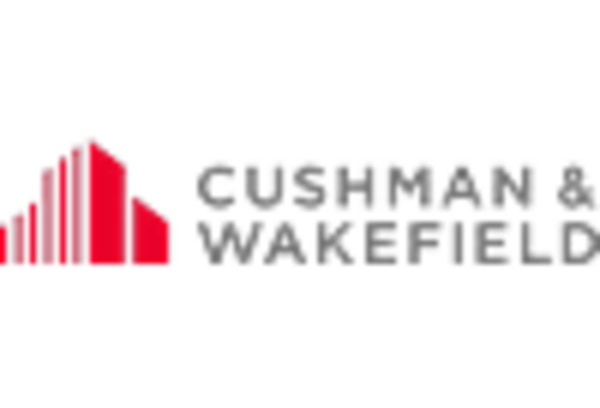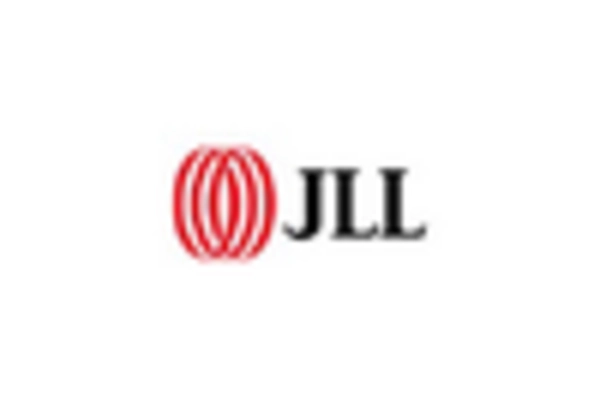North America : Market Leader in Management Services
North America is the largest market for property and community management, holding approximately 45% of the global market share. Key growth drivers include a robust real estate sector, increasing urbanization, and a rising demand for professional management services. Regulatory support, such as tax incentives for property management firms, further catalyzes growth. The U.S. and Canada are the leading countries, with the U.S. alone accounting for about 40% of the market share.
The competitive landscape is characterized by major players like CBRE Group, JLL, and Cushman & Wakefield, which dominate the market with their extensive service offerings. The presence of technology-driven solutions, such as property management software, is also on the rise, enhancing operational efficiency. As the market evolves, companies are increasingly focusing on sustainability and tenant engagement to meet changing consumer expectations.
Europe : Emerging Market with Growth Potential
Europe is witnessing a significant transformation in the property and community management market, holding around 30% of the global share. Key growth drivers include increasing investment in real estate, urban regeneration projects, and a growing emphasis on sustainability. Countries like Germany and the UK are leading this growth, with Germany holding approximately 15% of the market share, driven by its strong economy and demand for residential properties.
The competitive landscape features key players such as Colliers International and JLL, which are expanding their services to include technology-driven solutions. The market is also seeing a rise in local firms that cater to specific community needs. Regulatory frameworks across Europe are becoming more supportive, encouraging innovation and investment in property management services. The European Commission has emphasized the importance of sustainable urban development in its policies.
Asia-Pacific : Rapid Growth in Emerging Markets
Asia-Pacific is rapidly emerging as a significant player in the property and community management market, accounting for approximately 20% of the global share. The region's growth is driven by urbanization, increasing disposable incomes, and a burgeoning middle class. Countries like China and India are at the forefront, with China holding about 12% of the market share, fueled by its massive urban development projects and real estate investments.
The competitive landscape is diverse, with both international firms and local players vying for market share. Key players like Greystar Real Estate Partners and RealPage are expanding their footprint in the region. The market is also witnessing a shift towards technology adoption, with smart property management solutions gaining traction. As regulations evolve, there is a growing focus on tenant rights and sustainable practices, aligning with global trends.
Middle East and Africa : Emerging Opportunities in Management
The Middle East and Africa region is gradually emerging in the property and community management market, holding around 5% of the global share. Key growth drivers include urbanization, infrastructure development, and a growing expatriate population. Countries like the UAE and South Africa are leading this growth, with the UAE accounting for approximately 3% of the market share, driven by its real estate boom and investment in smart cities.
The competitive landscape is characterized by a mix of local and international players, with firms like Hines and Cushman & Wakefield establishing a presence. The market is also seeing increased investment in technology and innovation, particularly in property management software. Regulatory frameworks are evolving to support real estate development, with a focus on sustainability and community engagement, which are becoming essential for attracting investment.


















Leave a Comment